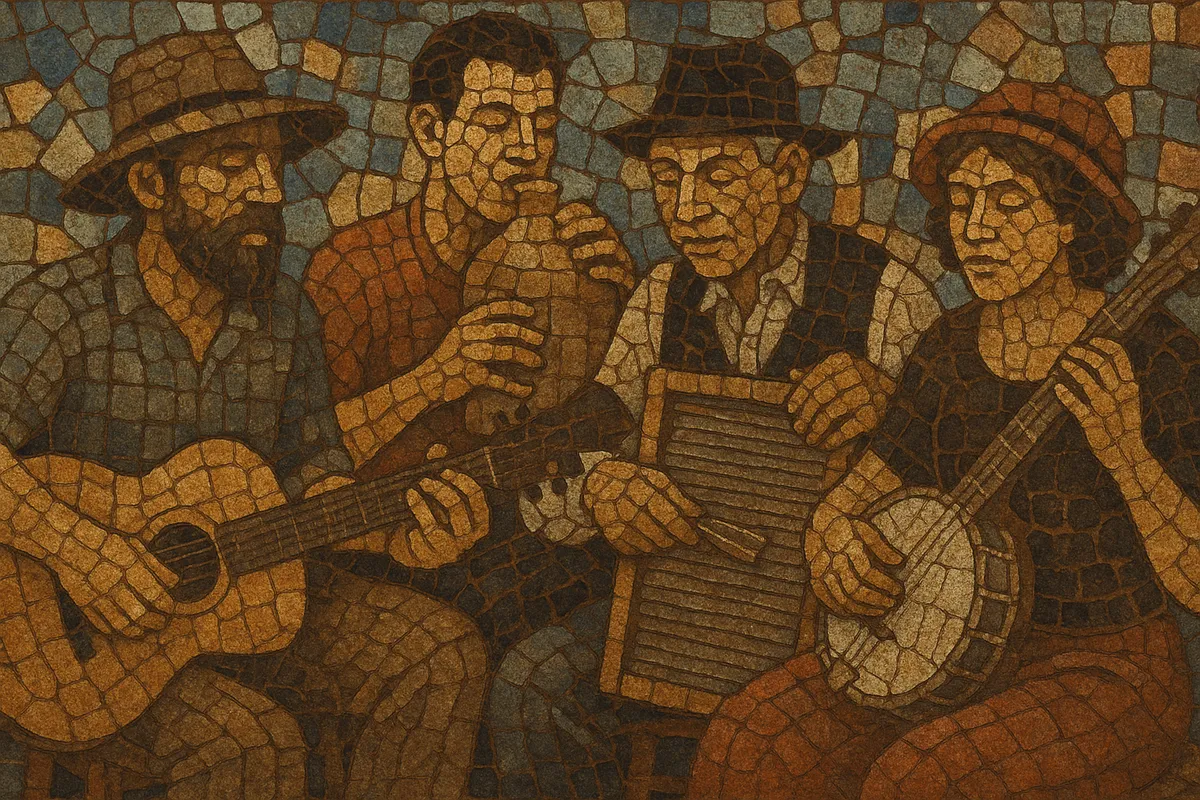Jug band music is a lively, DIY-oriented roots style that blends country blues, ragtime, early jazz, and old-time string band traditions. Its signature sound comes from using everyday objects as instruments—most famously a blown stoneware jug for bass tones—alongside kazoos, washboards, washtub (gutbucket) bass, spoons, and traditional instruments like guitar, banjo, harmonica, and fiddle.
Often performed on street corners, in dance halls, and at parties, jug band music emphasizes a strong two-beat or shuffle groove, call-and-response vocals, and playful, sometimes bawdy “hokum”-style lyrics. The feel is informal and joyous, with arrangements that invite audience participation and musicians to swap leads and riffs.
Jug band music emerged in African American communities in the American South—especially Louisville, Kentucky, and Memphis, Tennessee—in the 1910s. It grew out of street performance and medicine show circuits, where musicians mixed country blues, ragtime, early jazz, and old-time string band practices with makeshift instruments like jugs, washboards, and washtub bass. Louisville ensembles such as Earl McDonald’s groups helped establish the format, while Memphis players brought a strong blues feel and a looser, danceable swing.
The classic recording era began in the mid-to-late 1920s. Whistler & His Jug Band and the Dixieland Jug Blowers documented the sophisticated Louisville sound, weaving ragtime- and jazz-inflected arrangements. In Memphis, the Memphis Jug Band (led by Will Shade) and Gus Cannon’s Jug Stompers (featuring Gus Cannon and harmonica ace Noah Lewis) cut influential sides for major labels. These records showcased 12-bar blues, ragtime strains, and “hokum” humor, and popularized the jug as a bass voice within a small ensemble.
As electric blues, swing, and later rhythm & blues took hold, jug band recording waned in the 1940s. The folk revival of the 1960s sparked renewed interest: Jim Kweskin & The Jug Band, the Even Dozen Jug Band, and Mother McCree’s Uptown Jug Champions (a precursor to the Grateful Dead) revived classic repertoire, stagecraft, and instrumentation for new audiences. This period cemented jug band music’s place in the broader folk and Americana canon.
Jug band music’s DIY spirit and rhythmic vitality influenced skiffle in the UK—an important stepping stone to the British rock explosion—and fed into the American folk and country-rock movements. Its blend of humor, participatory performance, and portable instrumentation continues to inspire contemporary roots and community music-making.


